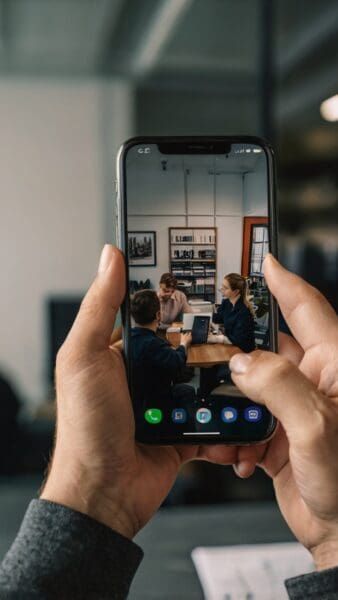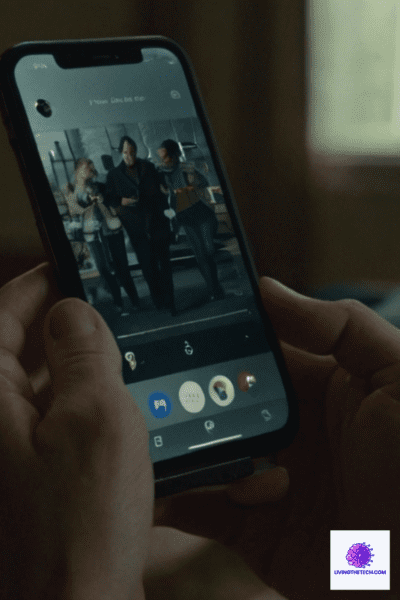How Digital Culture Affects Our Mental Health Today
Understanding digital culture’s impact is the first step. Discover ways to protect your mental health and thrive in a tech-driven society.
In today’s digital world, technology is everywhere, which has a huge impact on our mental health. We must find a balance between digital culture’s good and bad sides.
Being always connected can cause stress and burnout. People find it hard to disconnect and balance work and life. Too much time on phones, social media, and games can harm our sleep, work, and mental health.
But the digital world also brings benefits. For example, telemedicine makes it easier to get mental health help from home. Apps for stress, sleeping, meditation, and self-reflection help us take care of our minds.

Key Learnings
- The digital age has both positive and negative impacts on mental health, with increased accessibility to mental health services but also the risk of digital addiction and burnout.
- Constant connectivity and the 24/7 culture can lead to stress and work-life imbalance, while excessive use of technology can impact sleep, productivity, and overall well-being.
- Telemedicine and mental health apps provide new avenues for seeking professional help and engaging in self-care practices.
- Understanding the complex relationship between digital culture and mental health is crucial for individuals, communities, and societies to navigate this evolving landscape.
- Developing strategies for mindful technology use, digital detox, and promoting digital literacy can help mitigate the negative impacts of digital culture on mental wellbeing.
1. Embracing the Digital Age: A Double-Edged Sword
Digital Advancements and Mental Wellbeing
The digital age has changed how we think about mental health. Telemedicine and mental health apps make it easier to get help. You can find therapists online and even have video sessions from home.
Apps also offer tools like meditation and journaling to help you care for yourself. This lets you take charge of your mental health.
But the digital world also has downsides. Too much time online can hurt your mental health. Social media can make you feel lonely and set bad examples.
It’s important to use technology wisely. Taking breaks and choosing real-life interactions can help. Finding a balance is key to using technology for good.

“Technology is neither good nor bad; nor is it neutral. It is to be governed and guided, with wisdom and foresight.” – Ursula K. Le Guin
2. The Paradox of Social Connection
In today’s world, social connection is a paradox. Social media connects us globally but also increases loneliness. A study found loneliness rising in the developed world, affecting our health and society.
Danvers and Effinger from Arizona used special recorders to study loneliness. They found that feeling lonely doesn’t always mean we’re alone. Feeling lonely peaks at about 75% alone time.
Social media lets us share our lives, but can also make us feel bad about ourselves. In the US, 46% of adults feel lonely, especially young people and those earning less. It’s important to balance our online and offline lives for true connections and mental health.
Navigating the Digital Landscape
Technology’s effect on our social lives is huge. The Harvard Study of Adult Development showed that good relationships make us happy and healthy. Being connected to family and friends makes us happier and healthier.
Deep, meaningful relationships are key to a good life, especially in fast-paced societies. Heavier social media users feel lonelier than lighter users. Yet, social media users feel more connected than non-users.
“The essence of deep, meaningful relationships is a crucial component for a fulfilling life, particularly in the context of fast-paced and individualistic societies.”
Shared intentionality is what makes humans unique, enabling us to work together and plan. It helps us develop socially and physically. But it can be hard to understand each other’s actions and plans.
Finding a balance between online and offline life is key. By understanding social connections in the digital age, we can improve our relationship with technology. This way, we can find happiness in both our online and real-life interactions.

3. Mental Health in the Always-on Culture
Smartphones and constant connection have mixed work and personal life. Being always on can cause stress and burnout. It’s hard to relax and have time for yourself. It’s key to set clear boundaries to keep your mental well-being in an always-on culture.
Being always reachable can hurt your work-life balance. This can badly affect your mental health.
In today’s world, work and personal time mix a lot. This makes it hard to find time to rest and get fresh air. Not moving enough and not getting outside can make you feel worse mentally.
For those working for themselves, it’s tough to show you’re doing well when you’re not. It’s vital to take breaks and take care of yourself. Successful people say it’s about feeling good every day, not just about work.
To deal with the always-on culture, you need to focus on work-life balance and mental health. Look for help, set limits, and do things that help you relax and unwind.
4. The Lure of Digital Addiction
Digital technologies have advanced quickly, bringing us closer together. But this has also led to concerns about technology addiction. Digital addiction includes too much use of smartphones, social media, and video games. It can harm our mental health, sleep, and overall wellbeing.
Studies show that heavy smartphone users often feel more depressed, anxious, and lonely. The tech industry aims to keep us hooked, creating brain connections like substance addiction.
Recognizing and Overcoming Addictive Behaviors
Digital devices are everywhere, making it hard to keep a healthy tech balance. College students, who use tech a lot, often multitask and struggle to make friends in person.
To fight digital addiction, we need to take back control of our tech habits. This means using our phones less, turning off notifications, and setting times to check messages. By being more mindful of how we use tech, we can stay connected without losing our wellbeing.
“Digital addiction has surged due to the tech industry’s focus on increasing profits through more user engagement.”
It’s key to spot the signs of digital addiction and act on them for our mental health. By using tech wisely, we can enjoy its benefits while avoiding addiction.
5. Cyberbullying: The Dark Side of Digital Connectivity
Our lives are more digital than ever, and cyberbullying is a big worry. The internet’s anonymity lets some people act badly, hurting others’ mental health. We need everyone to help make the internet safer and kinder.
Research shows that 37% of kids aged 12 to 17 have faced online bullying, and 59% of U.S. teens have been bullied online. Cyberbullying can be many things, like harassment, insults, pretending to be someone else, and leaving someone out.

Cyberbullying can cause depression, anxiety, and low self-esteem. It can even lead to suicidal thoughts. People who are bullied online might start to withdraw, sleep or eat differently, and struggle in school.
Fixing this problem needs a team effort. Teens who are exposed to extreme cyberbullying may even require professional therapy or counselling. It’s important to have friends, family, teachers, and mental health experts to support them.
By working together, we can make the internet a better place. We can fight cyberbullying and keep the digital world welcoming for everyone.
“Cyberbullying is a form of harassment that can have lasting consequences on a person’s mental health and wellbeing. It’s crucial that we address this issue head-on and work together to create a safer digital environment.”
6. Workplace Wellbeing in the Tech-Driven Era
Fostering a Healthy Work Environment
In today’s tech world, work and personal life often mix. This can lead to job stress and burnout. Employers see mental health issues as a big problem, affecting workability by up to 95%.
Creating a healthy workspace is key. It means setting clear boundaries and encouraging a balance between work and personal life. Digital mental health treatments have been shown to be 75% effective. Also, using tech for mental health support is growing, with 68% of health workers using it.
Supporting mental health boosts productivity and job happiness. It also helps the company do better. Having a flexible IT setup and using business intelligence smartly are key to success.
“Investing in employee wellbeing is not just the right thing to do, but it also makes good business sense. Healthy, engaged employees are the foundation for a thriving organization in the digital age.”
Organisations can create a supportive work environment by tackling tech-related challenges. With more people working remotely, training in virtual communication and AI-powered wellbeing solutions will be crucial.
Putting workplace wellbeing first is a moral and strategic choice. It helps companies succeed and stay strong in the digital world. By focusing on employee mental health, companies can reach their full potential.
7. Mental Health: Leveraging Digital Tools
In today’s digital world, mental health support has changed a lot. It brings both challenges and new ways to help. Online services like telehealth and mental health apps are now key in reaching more people and helping them manage their mental health.
These digital tools are great because they’re easy to use and available anytime. With not enough mental health professionals and care spread out unevenly, telehealth helps fill the gap. Mental health apps also offer tools like mood tracking and meditation, helping people take charge of their mental health.
Digital tools are changing how we get mental health care. They use data from devices like phones and wearables to understand how we feel and behave. This leads to care that’s more tailored to each person, moving towards a more holistic approach.
But, using digital tools in mental health care comes with its own set of challenges. We must worry about privacy, data safety, and making sure everyone has access. Finding the right mix of technology and care is key to making digital mental health tools work well.
By using digital tools, we can make mental health support more accessible and personal. It’s important to use these resources wisely, understanding their strengths and weaknesses as we move forward.
8. Strategies for Harmonising Technology and Wellbeing
In today’s digital world, finding a balance between tech and well-being is key. Digital detox helps by unplugging and reducing stress. Using technology mindfully, staying present and focused, also improves our tech use.
Mindful Consumption and Digital Detox
It’s important to separate work from personal life and control screen time. Prioritising face-to-face interactions is also crucial for a balanced life. Creating screen-free zones at home boosts real-life socialising by 35%. Check out my previous post on taking up the Digital Detox Challenge.
Getting support from friends and family helps manage tech-related stress. Digital detox and mindfulness are great for fighting tech’s negative effects. A 30-day tech break can rebalance dopamine for better mental health. Apps like Headspace and Forest help manage digital habits and balance work and life. By taking a digital detox, being mindful of tech use, and setting work-life boundaries, we can find a balance. This should help foster a healthier relationship with technology.
In the tech world, there’s a growing focus on technology-life balance. 82% of tech workers face mental health issues from too much screen time. Tech companies are now offering digital literacy and safety training to help. The Australian government has recently taken it a step further and passed into law the “right to disconnect”. This should provide much-needed relief to employees who feel pressured to respond to calls or messages from their employers outside of working hours. Under this law, workers are now entitled to disregard after-hours communication without the worry of facing any repercussions from their supervisors.

Be Smart About Using Technology
In today’s digital world, how we use technology affects our mental health. We see both good and bad sides of technology. To stay healthy, we need to use technology wisely and know how to use it well.
Technology has changed our lives, but we must keep a balance. We need to understand how digital life affects our mental health. This way, we can use technology in a way that helps us, not hurts us.
To move forward, we need to use technology in a way that makes us feel good. We should use technology in a smart way and take care of our digital lives. This should help us live better, both online and offline.
The views and opinions expressed in this blog are solely my own and reflect my personal experiences. While I strive to provide helpful information and share what has worked for me, please remember that everyone’s situation is unique. The content provided here is not intended as professional advice. If you require specific guidance or support, I strongly encourage you to seek assistance from qualified professionals in the relevant field

